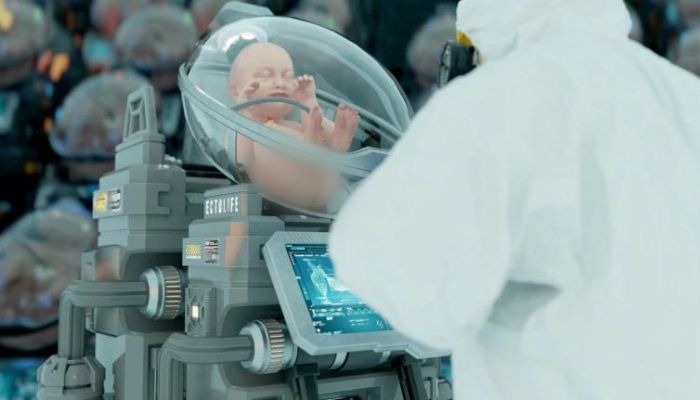Choosing the traits of the child from a menu is possible in the world’s first artificial womb facility. According to reports, Ectolife, which can produce 30,000 children annually, is the result of more than 50 years of innovative scientific study.
Biotechnologist and science communicator Hashem Al-Ghaili, who lives in Berlin, is the creator of the idea. Hashem Al-Ghaili, unveiled a concept video for Ectolife, a facility for creating artificial wombs.
Around 300,000 women die from pregnancy-related problems, according to the World Health Organization. The “EctoLife” synthetic womb is intended to lessen human suffering and lower the likelihood of C-sections. Premature births and C-sections will be a thing of the past thanks to EctoLife.
According to Hashem, it also provides a solution for women whose uterus were surgically removed owing to difficulties from cancer or other diseases.
As well as Japan, Bulgaria, South Korea, and many other nations that are experiencing a significant population drop, it may also be beneficial.
Hashem claims that the invention will be a game-changer for couples who are struggling with infertility, fed up with waiting for adoptions, or concerned about pregnancy complications. He also asserted that technology might put an end to miscarriages.
According to Hashem, the facilities will enable infertile couples to become the real biological parents of their own children by helping them conceive a baby. You may genetically modify the embryo before placing it in the artificial womb if you purchased an “Elite Package.” You can choose your strength, height, IQ, and eye and hair color in addition to avoiding inherited genetic illnesses.
According to the released video, this facility is the first of its type and can raise 30,000 infants in a single year; it was also stated that solar and wind energy was used to power the building. Ectolife contains 75 labs, each of which can house up to 400 artificial wombs (also called growth pods). Artificial intelligence is used at the institution to track and support each baby’s progress.
The Ectolife video claims that intended parents are required to donate their sperm and eggs for in-vitro fertilization. They will have the ability to select desirable characteristics, check for birth abnormalities, and create “genetically better embryos” (embryos that are devoid of genetic issues).
Before implantation, the prospective parents can genetically modify their embryo by using a “CRISPR-Cas 9 gene editing tool” (currently used to correct a genetic mutation in embryonic stages for hypertrophic cardiomyopathy).
According to the video, Ectolife will make considerable use of AI technologies to monitor deviations from normal gestation and give nutrients tailored to each child’s needs.
It was also said that by using 360-degree cameras and Virtual Reality (VR) headsets, parents could limit what their children might see and hear. Through their smartphone, they can also continuously receive footage of their child’s progress.
The concept video also discusses using gentle music and words to support a child’s early development phases of learning. The amniotic fluid-like solution will drain from the growth pod after the embryo is fully developed, and the child will be extracted from it.
Such growing pods can also be utilized indoors because they consume a small amount of electricity to operate. Before 2020, a concept video with a similar theme was published.
Through the creation of the “Bio Bag,” scientists achieved a breakthrough in the field of artificial womb technology as early as 2017. Eight foetal lambs were reportedly grown by scientists for 3.5–4 months at that time.














